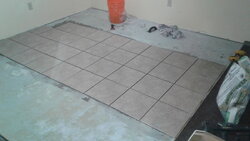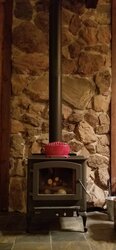I saw that Canadian Tire had the upgrade blower for the 30NC on sale...regular $169 Canadian pesos, now $100 pesos. Well....Id already decided to buy that stove, so I wasnt going to let that deal go. Off I went with Junior to pick one up. I figured If wait until either the weather was cooler or until I saw the stove on sale.
At any rate, I remembered seeing the stove on for $200 pesos off a few weeks back, but hadnt done my research yet. I figured Id missed out on the price, but at least I could have a good look at the stove. Wouldnt you know...the floor demo model that I glanced at was still there AND it's now $300 cdn pesos off the regular price of $1399 SOLD
SOLD  ! So its got a few scuffs and finger prints on it....who cares. Anybody whos seen me man handle things around knows it was going to get a few of those anyway. Lol.
! So its got a few scuffs and finger prints on it....who cares. Anybody whos seen me man handle things around knows it was going to get a few of those anyway. Lol.
Id like to thank EVERYONE whos helped me with advice these past few weeks....especially anyone who warned about how much the paint smokes on the initial burn. I also bought 6 ft of single wall chimney pipe to put on it so I could do that initial burn out in the yard. Holy crap Im really glad I didnt try it in the basement. Heres a little video.
Im really glad I didnt try it in the basement. Heres a little video.
At any rate, I remembered seeing the stove on for $200 pesos off a few weeks back, but hadnt done my research yet. I figured Id missed out on the price, but at least I could have a good look at the stove. Wouldnt you know...the floor demo model that I glanced at was still there AND it's now $300 cdn pesos off the regular price of $1399
 SOLD
SOLD  ! So its got a few scuffs and finger prints on it....who cares. Anybody whos seen me man handle things around knows it was going to get a few of those anyway. Lol.
! So its got a few scuffs and finger prints on it....who cares. Anybody whos seen me man handle things around knows it was going to get a few of those anyway. Lol.Id like to thank EVERYONE whos helped me with advice these past few weeks....especially anyone who warned about how much the paint smokes on the initial burn. I also bought 6 ft of single wall chimney pipe to put on it so I could do that initial burn out in the yard. Holy crap
 Im really glad I didnt try it in the basement. Heres a little video.
Im really glad I didnt try it in the basement. Heres a little video.



